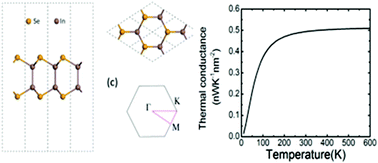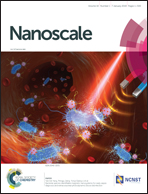Unusual phonon behavior and ultra-low thermal conductance of monolayer InSe†
Abstract
Monolayer indium selenide (InSe) possesses numerous fascinating properties, such as high electron mobility, quantum Hall effect and anomalous optical response. However, its phonon properties, thermal transport properties and the origin of its structural stability remain unexplored. Using first-principles calculations, we show that the atoms in InSe are highly polarized and such polarization causes strong long-range dipole–dipole interaction (DDI). For acoustic modes, DDI is essential for maintaining its structural stability. For optical modes, DDI causes a significant frequency shift of its out-of-phase vibrations. Surprisingly, we observed that there were two isolated frequency regimes, which were completely separated from other frequency regimes with large frequency gaps. Within each frequency regime, only a single phonon mode exists. We further reveal that InSe possesses the lowest thermal conductance among the known two-dimensional materials due to the low cut-off frequency, low phonon group velocities and the presence of large frequency gaps. These unique behaviors of monolayer InSe can enable the fabrication of novel devices, such as thermoelectric module, single-mode phonon channel and phononic laser.



 Please wait while we load your content...
Please wait while we load your content...